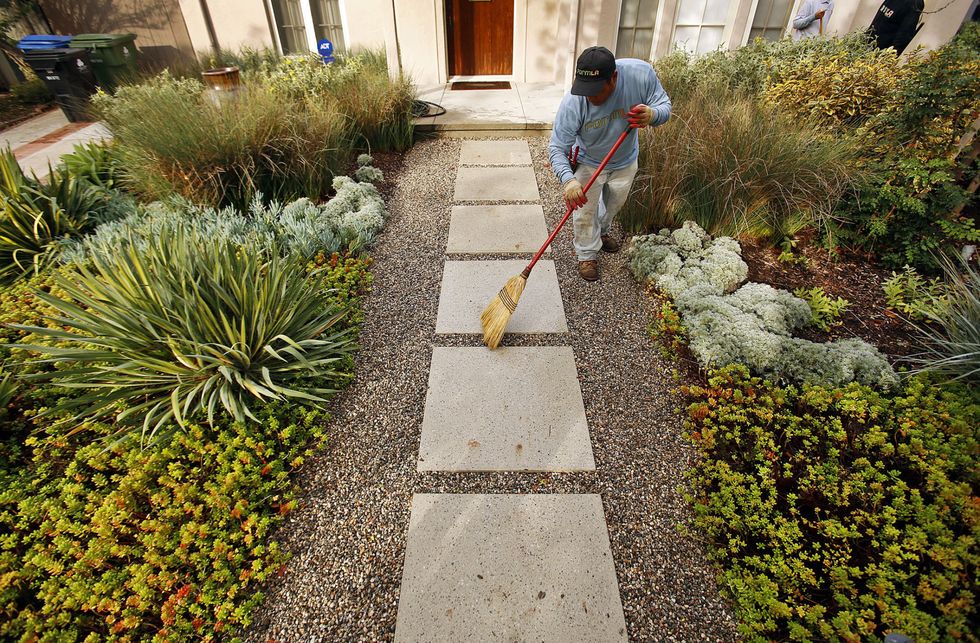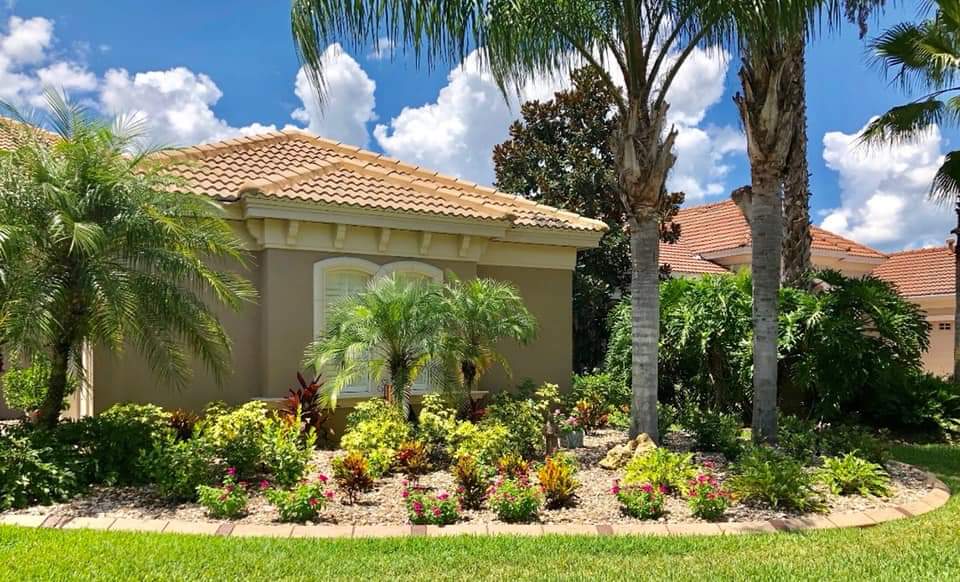Discover the Conveniences of Lasting Palm Desert Landscaping Techniques
Discover the Conveniences of Lasting Palm Desert Landscaping Techniques
Blog Article
A Comprehensive Overview to Designing and Implementing Effective Landscape Design Solutions
The art and science of landscape design expand past plain visual appeals; they entail a thoughtful integration of design concepts, ecological stewardship, and practical application. What techniques can one use to make certain these landscapes not just thrive but also flourish in consistency with their environments?

Recognizing Landscape Design Concepts
One might question what foundational aspects add to efficient landscape layout. At its core, effective landscape design pivots on numerous essential principles that direct the plan and selection of elements within a space. These principles consist of unity, percentage, rhythm, and equilibrium, each offering to create an unified outdoor setting.
Unity refers to the cohesive partnership among various elements, ensuring that they function together cosmetically and functionally. Balance can be achieved via unbalanced or in proportion arrangements, enabling the landscape to really feel steady and welcoming. Proportion includes recognizing the range of elements in relation to each various other and the surrounding setting, promoting visual harmony and comfort.

Analyzing Your Outdoor Room
Prior to applying the concepts of landscape design, a detailed analysis of your outdoor area is crucial. This preliminary evaluation assists define the extent of your landscape design job and makes certain that your style lines up with the unique features of your residential property. Begin by analyzing the dimensions of your space, taking precise dimensions to understand the offered location for numerous aspects such as paths, yards, and patio areas.
Following, observe the existing features of your landscape, including topography, dirt quality, and water drainage patterns. These factors dramatically influence plant selection and positioning. Furthermore, analyze the sunshine direct exposure throughout different locations throughout the day, as this will influence the sorts of plants that prosper in your garden.
Think about the microclimates created by frameworks, trees, and other obstacles, as they can affect temperature level and dampness degrees. Take note of any kind of existing plants or hardscape elements that you desire to eliminate or preserve. This comprehensive analysis prepares for a well-informed and reliable landscape design service, ensuring that your design is not only cosmetically pleasing but also practical and lasting for several years to find.
Lasting Landscaping Techniques
These practices not just promote eco-friendly balance but likewise improve the visual and useful worth of a landscape. Applying efficient irrigation systems, such as drip irrigation, decreases water waste and guarantees that plants obtain sufficient dampness (Palm Desert Landscaping).

Another effective technique is the strategic placement of bushes and trees to give natural windbreaks and shade, therefore decreasing energy costs (Palm Desert Landscaping). Rainfall gardens can be integrated into the landscape layout to handle stormwater drainage efficiently, filtering system pollutants prior to they go into rivers
Choosing the Right Plants
Choosing the right plants for your landscape is vital to achieving both aesthetic allure and ecological consistency. The procedure starts with an understanding of your neighborhood climate, dirt problems, and the particular microenvironments within your find out this here landscape. Assessing aspects such as sunshine direct exposure, dampness degrees, and existing flora will aid you pick plants that grow in your distinct setting.
Take into consideration including indigenous plants, as they are well-adapted to neighborhood problems, need much less maintenance, and support neighborhood wildlife. Additionally, picking a diverse array of varieties can boost biodiversity while reducing the danger of illness and pest outbreaks. It is essential to assess the development practices, flowering periods, and seasonal colors of prospective plants to create a natural and vibrant landscape.
Moreover, think of the planned use the area; as an example, if the area will certainly experience high foot website traffic, go with durable ground covers. By attentively selecting plants directory that align with both your environmental needs and aesthetic goals, you can create a lasting landscape that not only improves your building yet likewise contributes positively to the bordering ecological community.

Implementation and Upkeep Methods
As soon as the ideal plants have been chosen for your landscape, the focus shifts to reliable application and recurring maintenance approaches. Successful installation begins with proper website preparation, that includes soil screening to identify nutrient levels and pH, complied with by amending the dirt as required. Thoroughly set up plants according to their growth routines and light demands, making sure adequate spacing to promote healthy growth.
Irrigation is an important component of application. Develop a watering timetable that takes into consideration the specific needs of each plant species, changing for seasonal adjustments. Utilizing drip irrigation systems can enhance water efficiency and reduce drainage.
Upkeep approaches should be applied to make sure the durability and vitality of your landscape. Routine tasks include weeding, mulching, and trimming to regulate development and stop illness. Fertilization should be conducted based upon dirt tests, providing the necessary nutrients without over-fertilizing.
Monitoring for illness and insects is necessary; early detection can avoid significant damages. Finally, seasonal adjustments to upkeep regimens, such as winterizing perennials and preparing for spring development, will ensure that your landscape continues to be visually enticing and healthy and balanced year-round.
Conclusion
Effective implementation and ongoing upkeep further make certain the durability and vitality of landscapes. By incorporating these components, landscapes can be changed into stunning, practical settings that advertise biodiversity and add favorably to area health.
One might wonder what foundational components contribute to reliable landscape style. At click site its core, successful landscape style pivots on a number of crucial principles that lead the plan and option of components within a space.Choosing the right plants for your landscape is crucial to attaining both aesthetic appeal and ecological harmony. It is essential to assess the growth practices, flowering periods, and seasonal colors of possible plants to create a cohesive and dynamic landscape.
As soon as the ideal plants have been selected for your landscape, the focus shifts to effective implementation and recurring upkeep methods.
Report this page